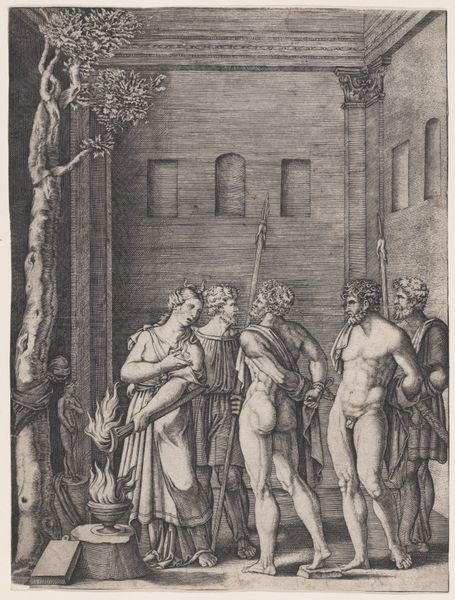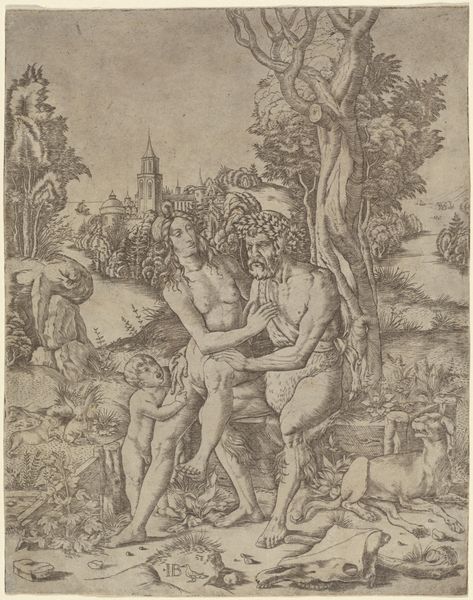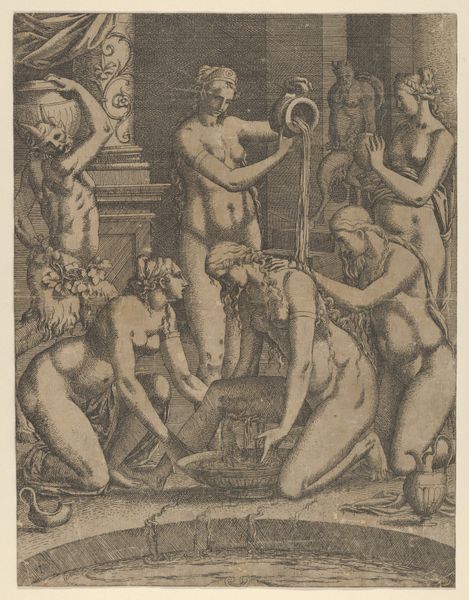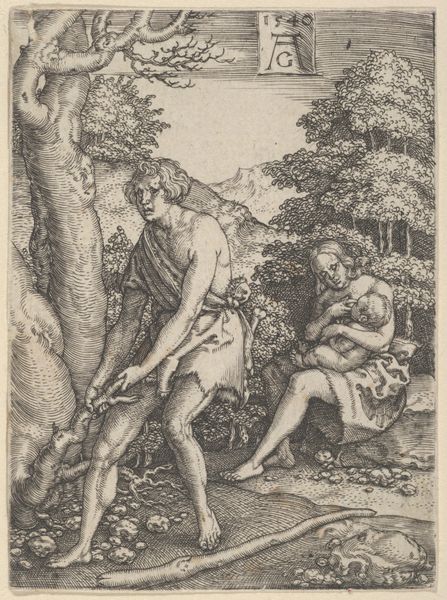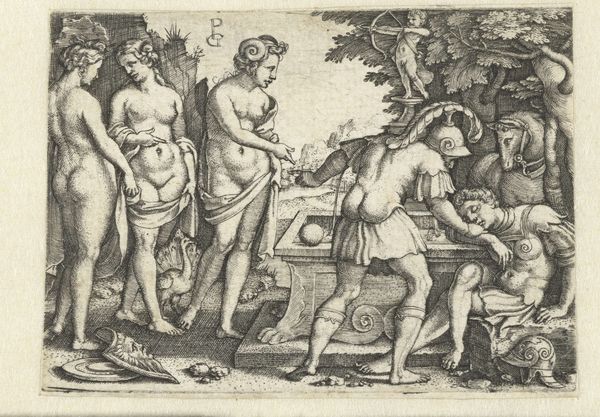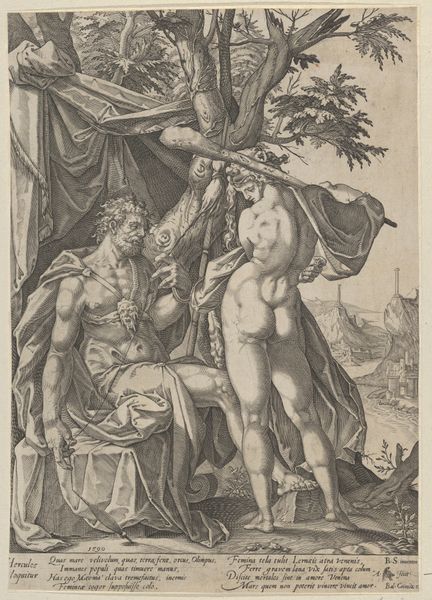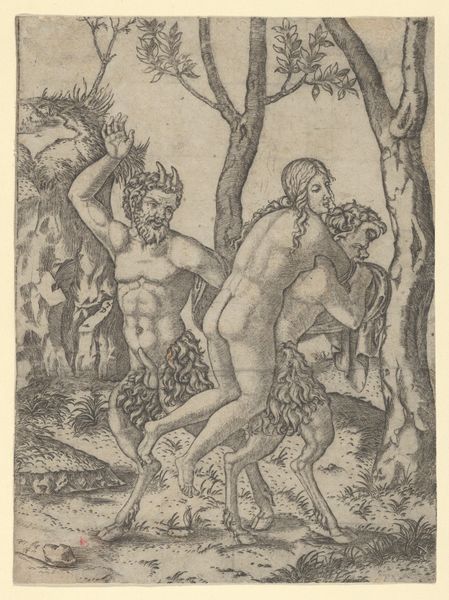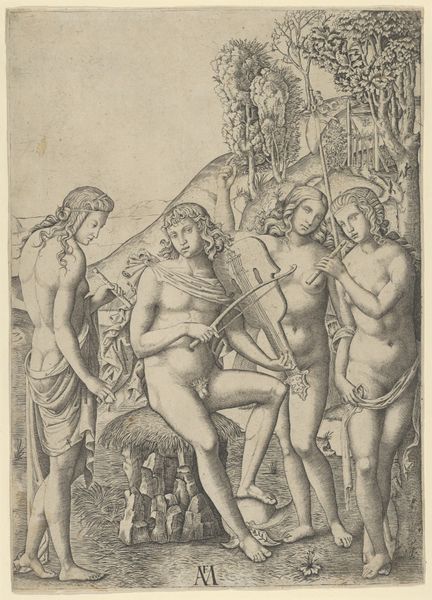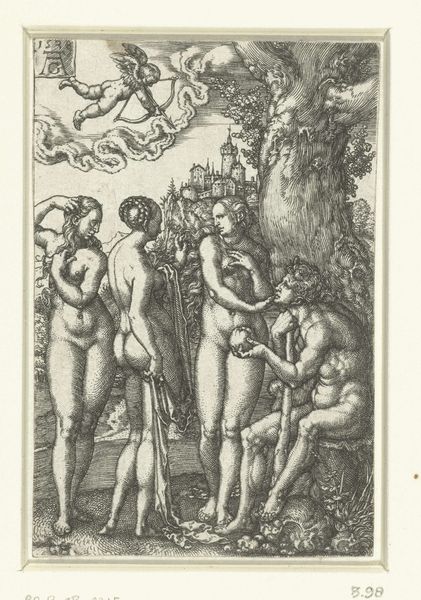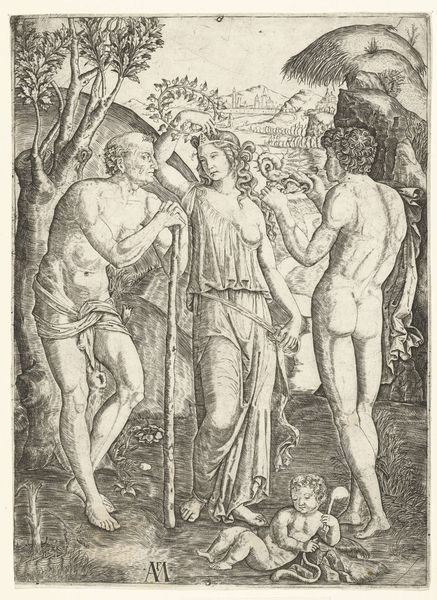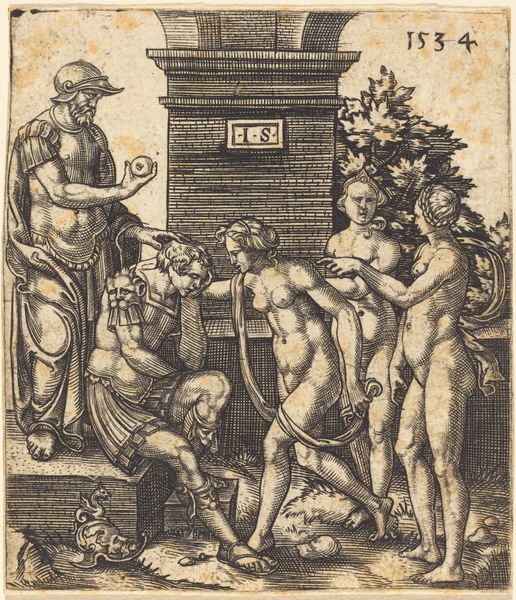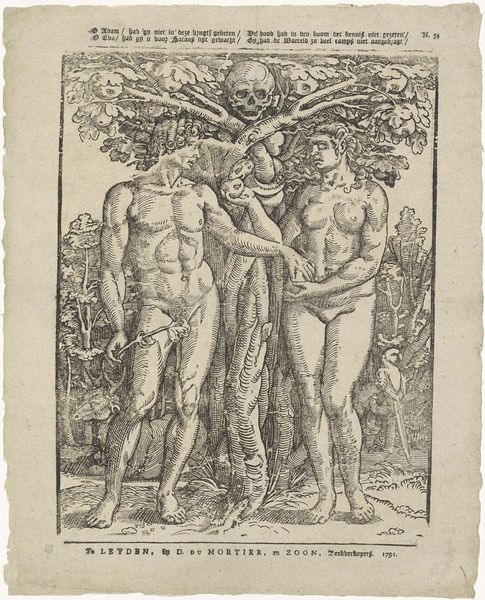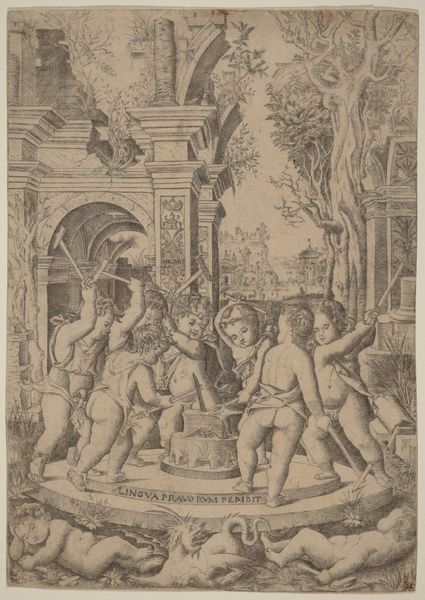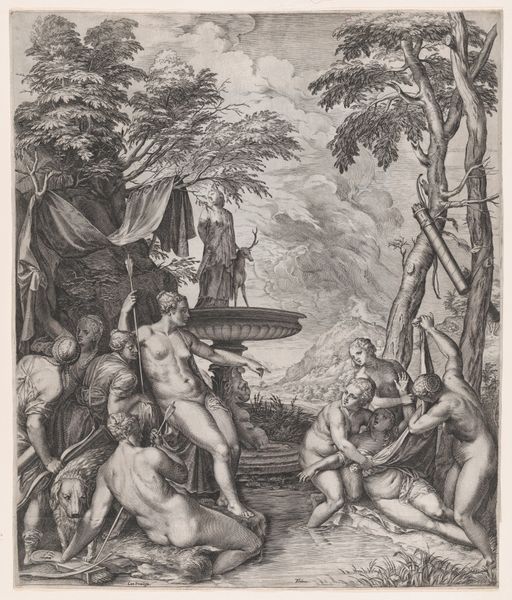
A young man sitting at right resting his head in his hand, a snake with a womans head before him, a young woman holding a pan pipes standing in the centre and a young man leaving at left 1505 - 1515
0:00
0:00
drawing, print, ink, engraving
#
drawing
#
pen drawing
# print
#
landscape
#
figuration
#
11_renaissance
#
ink
#
italian-renaissance
#
nude
#
engraving
Dimensions: Sheet: 10 3/8 × 8 7/16 in. (26.4 × 21.5 cm)
Copyright: Public Domain
Editor: Here we have a print, an engraving actually, by Marcantonio Raimondi, made between 1505 and 1515, titled “A young man sitting at right resting his head in his hand, a snake with a woman's head before him, a young woman holding a pan pipes standing in the centre and a young man leaving at left.” It's incredibly detailed, and the figures are so precisely rendered. It gives the scene a very still and posed quality. What do you see in this piece, Professor? Curator: Considering Raimondi’s historical context and engraving techniques, I see a fascinating convergence of artistic skill and societal influence. The linear precision achieved through engraving reflects not just aesthetic preferences, but a material engagement. Engraving demanded particular tools, laborious processes, and a trained hand, differentiating it from freer forms of drawing. How might this emphasis on technical process and dissemination challenge traditional views on artistic value during the Renaissance? Editor: That’s a very interesting take. I hadn't thought about the act of reproduction and dissemination. Curator: Indeed. This work would be available to a wider audience, rather than sequestered to one collector. Think about how the materials—the ink, the paper, the copperplate—facilitated the distribution of knowledge and aesthetics during the Renaissance. Could this ease of access and spread challenge traditional boundaries between ‘high art’ and a broader visual culture? Editor: I suppose it democratizes it. I was thinking more about the narrative scene and trying to understand what it might mean, but now I’m much more interested in who had access to it. Curator: Exactly. And who controlled the means of production and consumption of these images? The focus should move beyond symbolic readings alone. Examining who bought, sold, and copied the engraving can provide vital context. Editor: Thanks, I hadn't thought about art from this material perspective. I am keen to do so going forward.
Comments
No comments
Be the first to comment and join the conversation on the ultimate creative platform.
